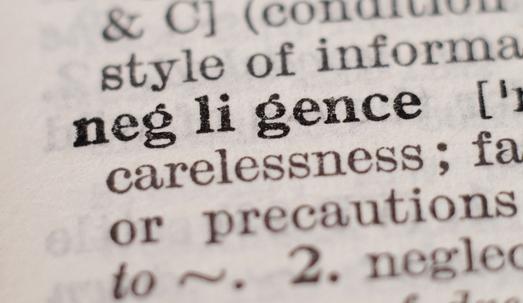Negligence per se is defined as the causing of an injury by way of violating a law or statute designed to protect the public. It is a tool used by plaintiff’s attorneys in a negligence lawsuit if it’s proving difficult to show evidence of duty of care and breach of duty of care. Using negligence per se shifts the burden of proof onto the defendant.

Table of Contents
What Is Negligence Per Se?
Per se negligence laws are a useful tool in a lawsuit when evidence of negligence is harder to acquire. If you are trying to win a slip and fall settlement, for example, your attorney will likely approach the case in a manner that fits a standard negligence case. However, if you’ve been hit by a drunk driver or otherwise injured in a car accident by someone who violated traffic laws and was cited in the process, you may be able to use negligence per se laws to sue for damages due to the injuries you sustained.
If you’re trying to determine whether your case is per se negligence, you can read about the laws in Illinois and compare the various facets of your case to the requirements in the statute. However, your attorney will be better equipped to navigate the legal process and help you determine whether you should pursue a negligence case or if negligence per se is more appropriate in your situation. The burden of proof is different for each type of lawsuit, and to a certain extent even shifts to the defendant in the case of a per se negligence lawsuit.
Proving Negligence Per Se
Proving negligence per se requires 4 parts. Those parts are:
- The defendant violated a statute or regulation
- The statute in question is a safety statute
- The defendant’s actions caused the type of harm that the statute or regulation was intended to prevent
- The plaintiff was a member of the class that the statute or regulation was intended to protect.
The Violation
For the case to meet this requirement, the defendant needs to have been issued a citation or fine by the jurisdiction in question for violation of the statute.
Type of Statute
The statute in question will need to be a safety statute. Examples of safety statutes are traffic safety laws or building code violations. Both types of statutes are put in place to protect public safety.
Cause of Harm
Evidence will need to show that the defendant’s action’s caused the type of harm the statute or regulation was intended to prevent. In the case of traffic laws, for example, that could be showing that by running through a stoplight or stop sign and subsequently causing injury, the defendant caused the type of harm that the statute was intended to prevent.
Protected Class
The person injured by the violation must be in the class of people the statute or regulation was intended to protect to qualify for a negligence per se lawsuit.
The evidence you, as the plaintiff, will need to show in a negligence per se case is limited. You will need to show that the defendant violated negligence per se laws and, in doing so, caused your injuries. Since the laws are in place to protect the public, you are already considered to be in the protected class and will need no further evidence for that portion of your argument. You will also need to show that the defendant was, for example, fined for a building code violation, cited for driving under the influence, or for violating another traffic law. Your drunk driving accident lawyer will be able to help you navigate through the legal questions and determine your best course of action.
Defenses to Negligence Per Se
There are a few defenses available in a negligence per se case. One defense would be that it was impossible to comply with the regulation or statute in the given scenario. Another defense applies in situations where complying with the regulation or statute would have been more dangerous than violating it.
Beyond the standard defenses to per se negligence, there are options that may limit the amount of damages the defendant will have to pay. You’ll need to speak with your attorney about how personal injury damages are calculated to determine whether these options will affect your case. These options are called affirmative defenses.
Comparative negligence is a defense that is used when the defendant admits to violating the regulation or statute but argues that the plaintiff is at least partially at fault for the accident. If this defense is successful, there will be a percentage of fault assigned to each party, and the final award amount will be reduced by the percentage of fault that is assigned to the plaintiff. This defense is an effort to reduce the amount of damages paid out by the defendant.
In a contributory negligence defense, the defendant will admit to violating the statute but argue that it was the plaintiff’s actions that caused his or her injuries. If this defense is successful, the plaintiff will be unable to receive any damages for the injuries he or she has sustained.
Immediate Actions After a Personal Injury Accident
If you’ve been injured in an accident, it is important to seek medical care for your injuries. When your injuries are severe enough, first responders will likely call an ambulance and ensure you’re seen by a doctor. If it is possible, while waiting for the ambulance to arrive, you should endeavor to take as many photos of the accident site as possible from every angle you can. You should also try to note the names and contact information for any witnesses to the accident. Any information or evidence you can gather at this stage will help your attorney to make your case in the future, whether it is a negligence case or negligence per se.





